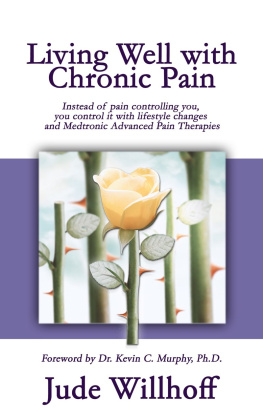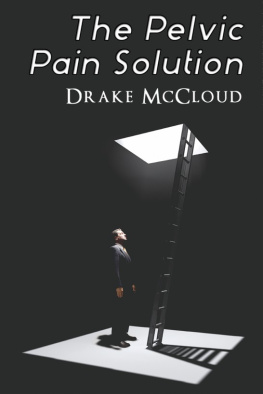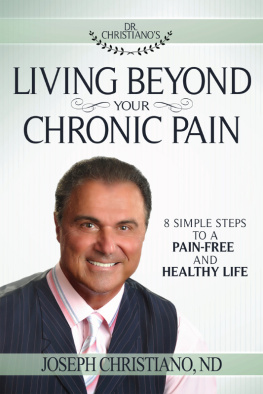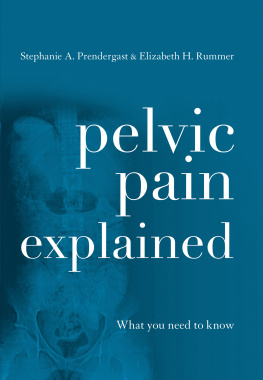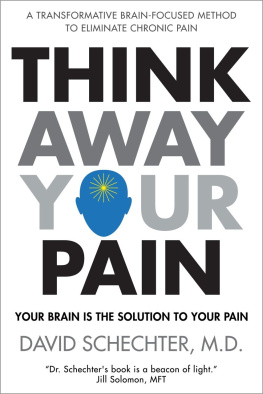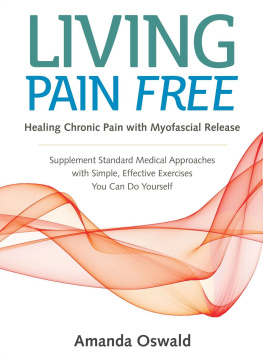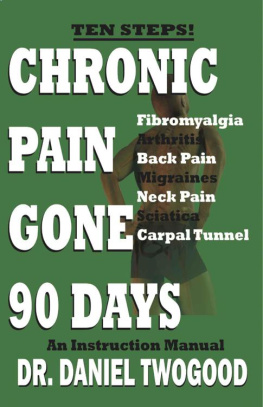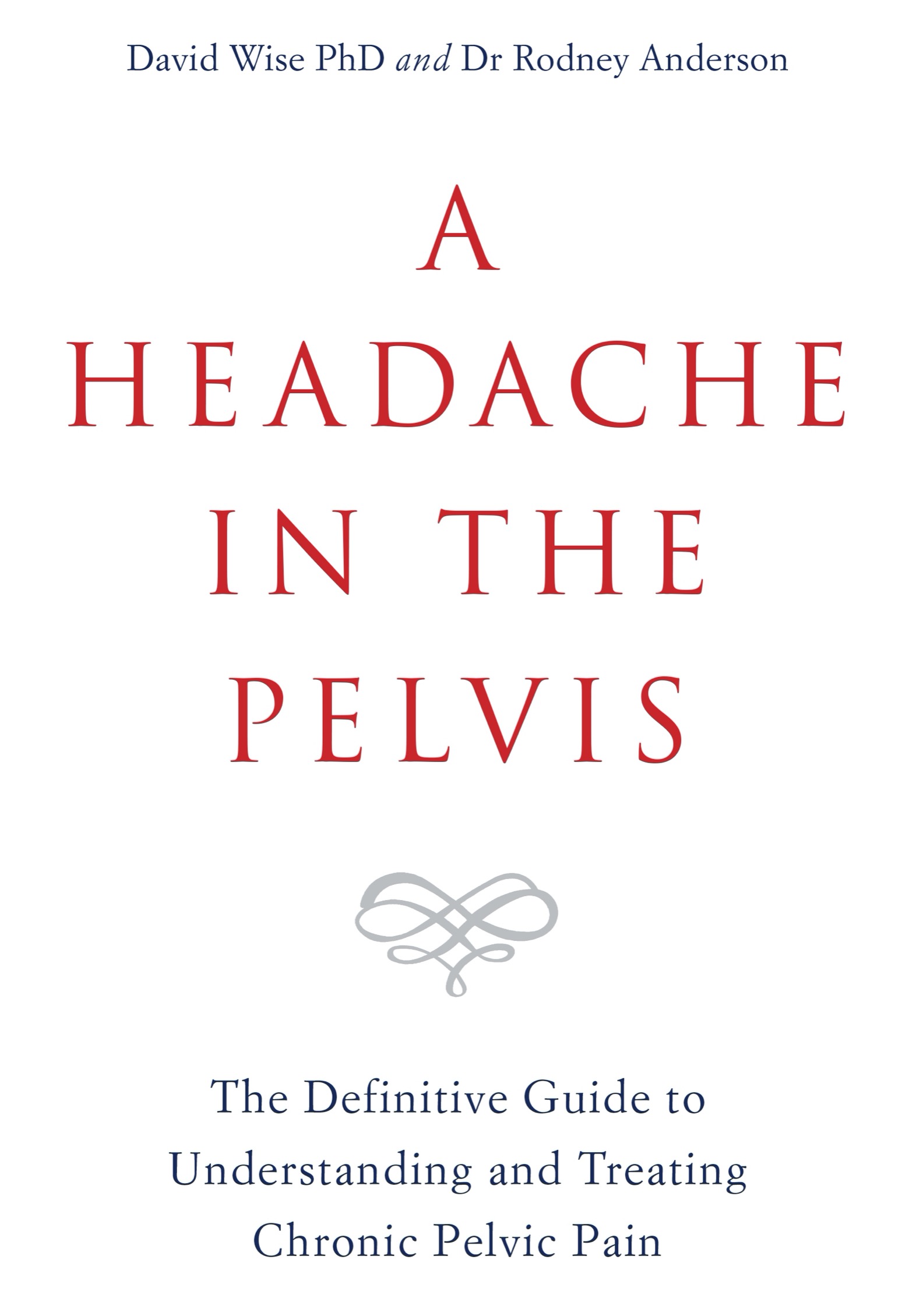Contents
ACCLAIM FOR
A HEADACHE IN THE PELVIS
One gloomy 5 a.m. in the winter of 2006, unable to sleep and trawling the Net yet again for some explanation of the chronic condition that had made my life a misery, I came across an extract from a book with the ugly title A Headache in the Pelvis. Here, after two years of expensive consultations and invasive medical tests, I found at last an accurate description of my plight.
The authors David Wise and Rodney Anderson listed twenty-three symptoms, which would tend, they said, to take on a life of their own. I had sixteen of them, including back pain, constantly changing abdominal pain, frequent nocturnal urination, and fierce twinges in legs and perineum. They called it chronic pelvic pain syndrome and concluded: The effects on a persons life have been likened to those of heart attack, angina, or Crohns disease. Sufferers tend to live lives of quiet desperation. Anxiety, depression, and catastrophic thinking are the norm.
I was hugely cheered on reading this.For two years I had oscillated between the conviction that I had cancer, or that my condition was psychosomatic.As each medical test indicated that I didnt have cancer, I expected Id quickly feel better. I didnt.
What to do? I had given up on official medicine. Its drugs made me sick. Its operations threatened my manhood without promising relief.Now A Headache in the Pelvis talked about years of stressful overachieving, sitting at a desk, and an embattled mental attitude that had led me to tense the muscles of my pelvic floor so that they had atrophied and were pinching the nerves that crossed them from bladder, penis, and prostate.I was definitely suffering enough. And growing curious. On your back, allowing your breath to establish its own pattern, eliminating all words from your mind, you focus on tension in the body and just, well, nothing, let it be. You go to meet the pain itself, and again, let it be.
It took many months.I shall remember for the rest of my life the day when, from the dry, knitted tension of my forehead, a great warm wave rose up and crashed across my chest and limbs, sweeping everything before it: thought, tension, pain. For five minutes I was pain free, utterly relaxed. It was the beginning of the way back.
Tim Parks for the London Times
This is a book that helps patients empower themselves in their own healing. With this book, patients learn how to gain control over their chronic pelvic pain. It is not a hocus-pocus solution; it is a long-term program that must be adapted into ones daily routine. I have witnessed firsthand how patients willing to change their behavior have been able to find healing.When I see patients after theyve read the book I can often see a change in their faces. To understand that we have the ability to affect our own healing process can be life changing.
Ragi Doggweiler, MD, associate professor, director of Neuro-Urology and Integrative Medicine, Division of Urology, University of Tennessee, Knoxville
After reading over the sixth edition of A Headache in the Pelvis, all I can say is Wow.Drs. Wise and Anderson have done it again! This has truly become the Bible for patients, both men and women, who suffer from pelvic floor muscle dysfunction. The book demystifies a condition that is so frequently overlooked and often mistreated in clinical practice. It empowers patients to be their own caregiver, while it encourages partnerships with clinicians who can be tremendously helpful in the patients path to symptom improvement.
A Headache in the Pelvis is on the top of my recommendation list.
Robert Moldwin, MD, author of The Interstitial Cystitis Survival Guide
Many pelvic pain patients go from doctor to doctor, specialist to specialist, without improvement, often feeling abandoned. A majority of patients with chronic pelvic pain do not respond to conventional therapies (antibiotics and anti-inflammatory drugs), leaving a huge void. Drs. Wise and Anderson offer a therapeutic option that can bring relief to many.
Bart Gershbein, MD, clinical instructor, Department of Urology, University of California School of Medicine, San Francisco
The sixth edition of A Headache in the Pelvis, by Drs. Rodney Anderson and David Wise, continues to be one of the most useful books for people who suffer from chronic pelvic floor pain. The book details a method for resolving pelvic pain by rehabilitating the pelvic floor muscles that have often been the brunt of anxiety or a reaction to a trauma or surgery. This new edition has filled in many of the answers raised since the publication of the first edition of this book in 2003.This new treatment model is based upon Drs. Rodney Anderson and David Wises work at Stanford University Medical Center.
Erik Peper, PhD, professor, Institute of Holistic Health Studies, San Francisco State University
Drs. Wise and Anderson have updated their important book on pelvic pain. This work has changed the way I think about pelvic pain. I now can find the clues in the physical exam (pelvic muscle spasm) that I had previously missed. This book is required reading for any clinician dealing with pelvic pain patients.
Stephen Bearg, MD, obstetrician-gynecologist, past chairman, Department of Obstetrics and Gynecology, Marin General Hospital, Kentfield, California
A Headache in the Pelvis is an excellent book, brimming with warmth, compassion, and insight. It describes a pioneering method that empowers patients with pelvic pain to understand and help reduce their pain and symptoms. It is the very best kind of medicine, in that it teaches patients how to reduce their own symptoms themselves. This book is for people affected by pelvic pain and for family members who care about them; its also for the medical providers who work with these patients.
Marlene Cresci Cohen, PhD, director, Behavioral Sciences, Valley Family Medicine Residency, Modesto, California, and professor, Volunteer Faculty Department of Family Medicine, University of California, Davis
A Headache in the Pelvis is a lamp in the dark human suffering of chronic pelvic pain. This book is a precious document that will help many people.
Robert Blum, MD, former chief, Department of Neurosurgery, Marin General Hospital, Marin County, California
I highly recommend this book to colleagues, clients, and friends all the time. It does a great job explaining the connections between muscle tension and pain symptoms.I find that after the first reading, the book needs to be read and reread.
Marilyn Freedman, PT, DPT, BCB-PMD, CAPP
This compelling understanding of chronic pelvic pain syndromes offers a new and pioneering approach to its alleviation.
Frank Werblin, PhD, professor of neuroscience, University of California, Berkeley
Since its first edition, A Headache in the Pelvis has been enthusiastically welcomed by patients suffering from urological pelvic pain syndromes (UCPPS), which may have been previously diagnosed as prostatitis or interstitial cystitis/painful bladder syndrome.
I have specialized in UCPPS for over fifteen years and have been impressed by the educational merits of this book, which provides factual medical information to the patient without exacerbating fears or anxieties. Indeed, I have witnessed the therapeutic benefits of this book, as it provides validation to patients along with empowering management strategies.


